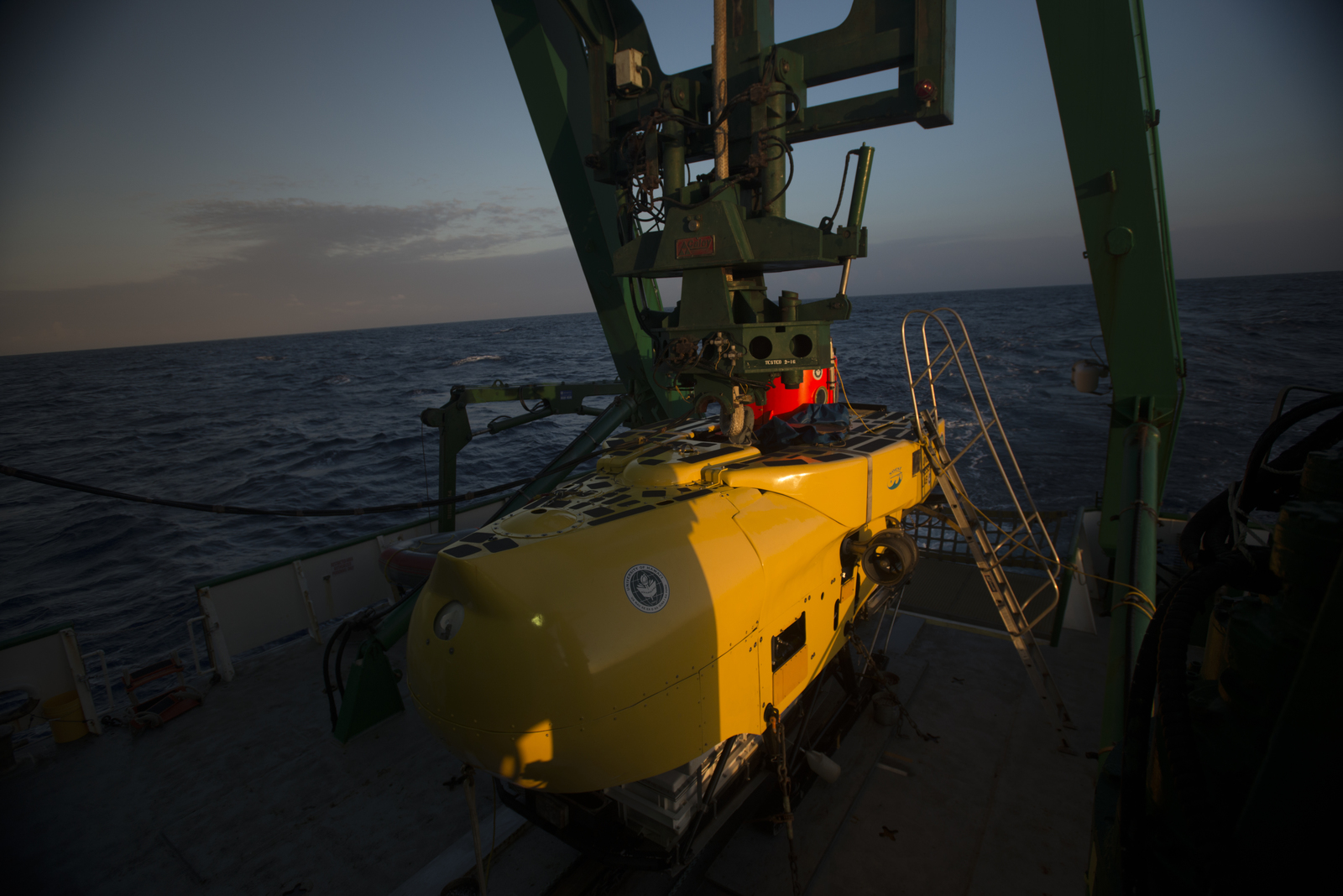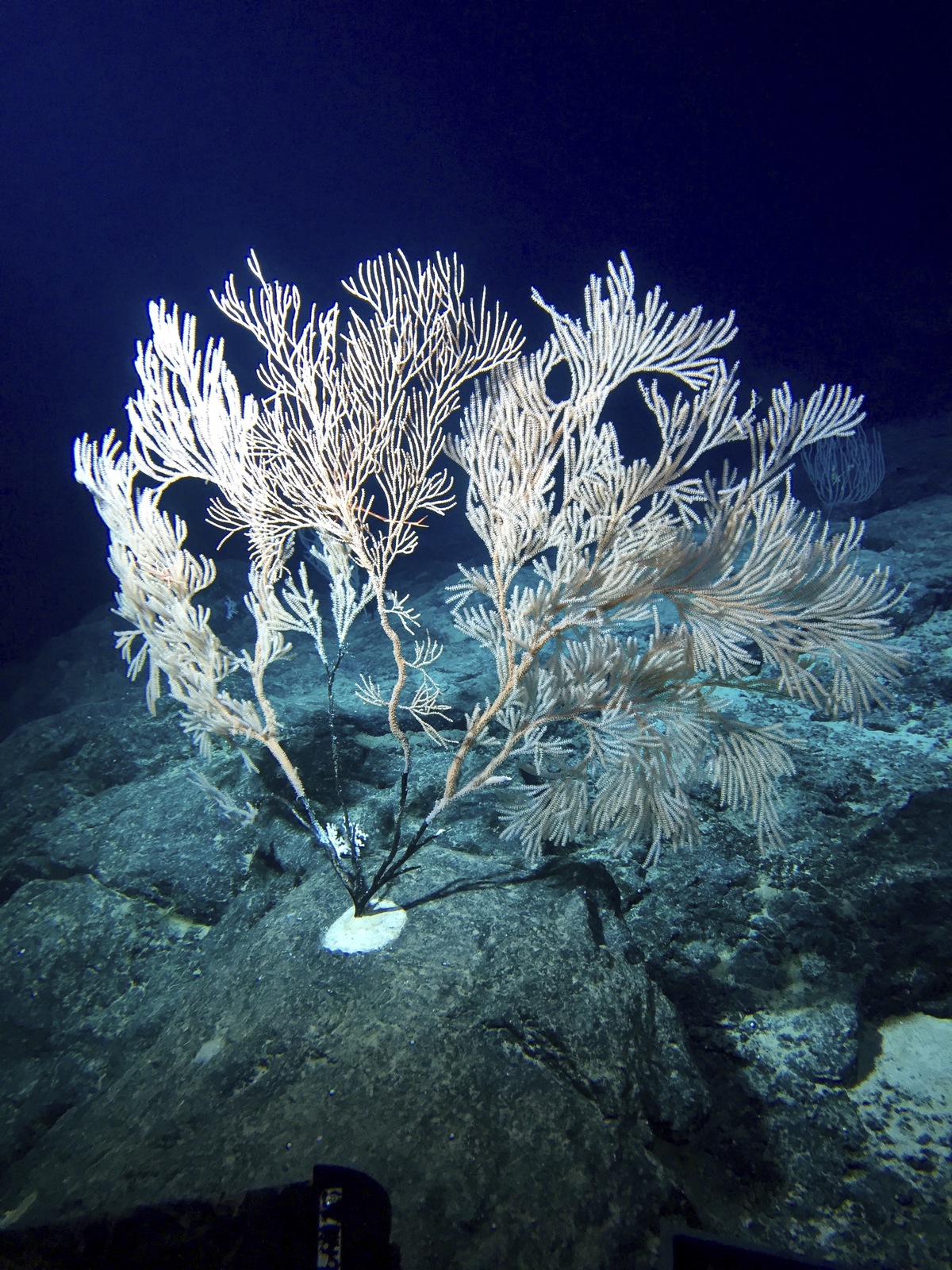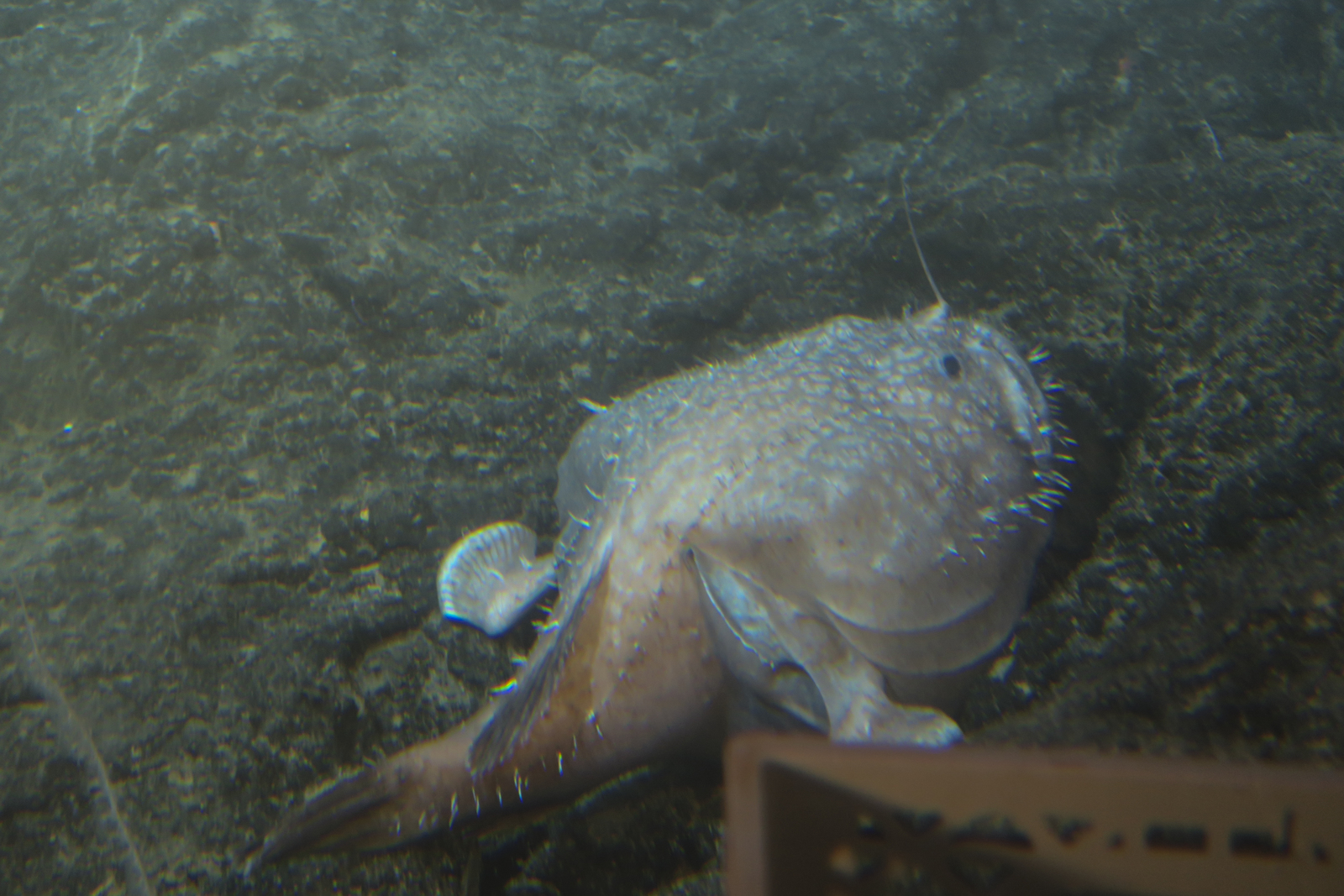In Photos: Seamount Dives Reveals Rare Marine Life
Creatures new to science

Deep underwater off the coast of Hawaii, researchers recently descended in submersibles to investigate mysterious, mountainous environments.
Scientists recently explored three seamounts — craggy landscapes thousands of feet below the sea surface made of extinct and active volcanoes. There are an estimated 10,000 seamounts in oceans around the world and they host diverse communities of sea life. But little is known about these complex ecosystems, and many have never been visited.
During three recent dive expeditions to three seamount destinations, Conservation International marine biologists discovered numerous rare and unusual creatures. This image shows a sample of acanthagorgia coral collected from the Cook seamount on Sept. 6, and it is thought to be a species new to science.
[Read the full story of the scientists' amazing seamount exploration]
Pisces V launch

Shot during the Conservation International led seamounts expedition from September 5-9, 2016 with the University of Hawaii on board the RV Ka’Imikai-O-Kanaloa.
Max Cremer pilots Pisces IV

Max Cremer piloting Pisces IV to the Lo’ihi seamount. Shot from Pisces IV on Lo’ihi seamount on September 8, 2016.
Shot during the Conservation International led seamounts expedition from September 5-9, 2016 with the University of Hawaii on board the RV Ka’Imikai-O-Kanaloa.
Kitefin shark

A Kitefin shark (Dalatias licha) and a Goosefish. Shot on Cook Seamount by Pisces IV on September 6, 2016, during the Conservation International and University of Hawaii Undersea Research Laboratory seamounts expedition.
Shot during the Conservation International led seamounts expedition from September 5-9, 2016 with the University of Hawaii on board the RV Ka’Imikai-O-Kanaloa.
Get the world’s most fascinating discoveries delivered straight to your inbox.
Prepping for launch

Shot during the Conservation International led seamounts expedition from September 5-9, 2016 with the University of Hawaii on board the RV Ka’Imikai-O-Kanaloa.
Gorgonian coral

Gorgonian coral. Shot from Pisces IV on Cook Seamount on September 6, 2016.
Shot during the Conservation International led seamounts expedition from September 5-9, 2016 with the University of Hawaii on board the RV Ka’Imikai-O-Kanaloa.
Deep sea primnoid coral

Deep sea primnoid coral. Shot on Cook Seamount by Pisces IV on September 6, 2016, during the Conservation International and University of Hawaii Undersea Research Laboratory seamounts expedition.
Shot during the Conservation International led seamounts expedition from September 5-9, 2016 with the University of Hawaii on board the RV Ka’Imikai-O-Kanaloa.
Shortdorsal cutthroat eel

A shortdorsal cutthroat eel (Synaphobranchus brevedorsalis) plexaurid coral and sea sponge. Shot from Pisces IV on Cook Seamount on September 6, 2016.
Shot during the Conservation International led seamounts expedition from September 5-9, 2016 with the University of Hawaii on board the RV Ka’Imikai-O-Kanaloa.
Goosefish

A goosefish rests on the the rocky bottom at Cook seamount. Shot from Pisces IV on Cook Seamount on September 6, 2016.
Shot during the Conservation International led seamounts expedition from September 5-9, 2016 with the University of Hawaii on board the RV Ka’Imikai-O-Kanaloa.
Brittle star and purple plexaurid coral

A brittle star clings to a purple plexaurid coral that is one of two species discovered on Cook seamount that could be new to science. September 6, 2016.
Shot during the Conservation International led seamounts expedition from September 5-9, 2016 with the University of Hawaii on board the RV Ka’Imikai-O-Kanaloa.
Plexaurid coral

Plexaurid coral — which is potentially new to science — and a sea sponge. Shot from Pisces IV on Cook Seamount on September 6, 2016.
Shot during the Conservation International led seamounts expedition from September 5-9, 2016 with the University of Hawaii on board the RV Ka’Imikai-O-Kanaloa.



